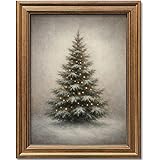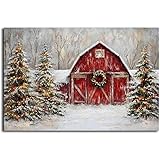Designing a lasting and beautiful kitchen requires careful planning. This process integrates both aesthetics and functionality. Shea McGee shares valuable insights in the accompanying video. Her Studio McGee perspective guides homeowners. You can create a kitchen that truly works for you.
Every decision shapes the heart of your home. A well-designed kitchen avoids fleeting trends. It embraces enduring quality. The goal is a space you love for years.
The Core Principles of Timeless Kitchen Design
A great kitchen finds balance. It merges beauty with everyday function. You want a lasting look. Avoid frequent remodels with smart choices.
Balancing Beauty and Functionality
Your kitchen must perform its duties. It also needs to look beautiful. Consider your personal habits. Design should support how you live and cook.
Functionality includes efficient flow. It involves thoughtful storage. Beauty comes from harmonious materials. It flows from a well-considered layout.
Embracing Timeless Materials and Textures
Avoid overly trendy elements. Trends quickly become outdated. Studio McGee prioritizes timeless materials. These choices ensure longevity in your kitchen design.
Natural materials add soul. They develop a beautiful patina over time. Man-made materials can lack character. They may make a kitchen feel indestructible but soulless.
Classic forms endure for a reason. They offer stability in design. Think of natural wood, stone, and plaster. These choices age gracefully and add depth.
Optimizing Your Kitchen Layout and Flow
The layout forms your kitchen’s foundation. Start by considering how you move. A good flow enhances daily use. It makes cooking and cleaning easier.
The Essential Work Triangle
Maintain a crucial work triangle. This connects your sink, range, and refrigerator. Keep these three points in close proximity. This creates an efficient path for tasks.
Good proximity saves steps. It improves kitchen usability. In remodels, existing shapes guide placement. Strive for walkability between these points.
Streamlined Forms and Smart Angles
Shea suggests avoiding angles in kitchen design. Odd-shaped islands or corner cabinets can date a space. Simpler forms offer greater longevity. Rectangles and clean lines feel more classic.
High-end kitchens often feature simple forms. They use straight lines and square corners. This approach offers a refined aesthetic. It helps a kitchen remain timeless.
Designing for Your Lifestyle
Honestly assess your habits. Are you a minimalist or do you prefer open storage? Open shelving or glass-front cabinets require tidiness. They display items, for better or worse.
Know how you cook and clean. Consider what might bother your eye. A kitchen is a significant investment. Design choices should truly feel right for you.
Crafting Visual Harmony: Sight Lines and Balance
Thoughtful alignment creates visual impact. It makes a home feel cohesive. Sight lines guide the eye. They contribute to an intentional design.
Intentional Alignment in Kitchen Design
Align key kitchen elements. Line up your sink with a window or fireplace. Center your island with the dining room. This creates a pleasing visual connection.
Perfect alignment is not always possible. Especially in remodels. Seek out opportunities for connection. Visual alignment brings a sense of order.
The Art of Asymmetrical Balance
Symmetry isn’t always the goal. Great design achieves beautiful balance. An asymmetrical layout can feel intentional. It adds interest without being chaotic.
Shea’s own kitchen island shows this. Offset stools and open shelving broke perfect symmetry. It created visual weight in a different way. This approach adds character to your kitchen design.
Sometimes, challenges lead to innovation. A custom furniture piece or secret door can balance a space. Materials and selections contribute to balance. They make the overall design feel complete.
Thoughtful Material Selection for Lasting Appeal
Materials tell your kitchen’s story. They define its character and style. Thoughtful choices ensure enduring beauty. They also influence functionality.
The Architectural Statement of the Range Hood
A custom range hood creates a focal point. It adds a beautiful moment to the kitchen. Consider its architectural presence. Do you want an enclosed workspace?
A grander appearance comes from overhang. Let the hood extend beyond the range. This detail elevates the design. It makes a visual statement.
Backsplash: Cohesion and Character
Backsplashes offer design flexibility. You can match the rest of your kitchen. Or, you can incorporate something different. A statement tile can add unique character.
Choose accent tiles carefully. Avoid overly trendy patterns. Timeless patterns include hand-painted or glazed tiles. Look at classic designs from decades ago.
Tile layout also makes an impact. A bricklay pattern feels classic. Stacking tiles looks more contemporary. Mixing backsplashes creates a transitional style. A wider grout can add a striped effect. A soldier course adds visual interest.
An all-stone backsplash can lean modern. Shea used Zellige tile for texture. This created interest with varying materials. They connected well while adding depth.
Functional Beauty in Kitchen Niches
Niches and small shelves add function. They hold essential items within reach. Think olive oil or a salt cellar. These spots also offer styling opportunities.
Use beautiful vessels for cooking oils. They become styling accessories. This merges beauty and function. Every detail can serve a purpose.
Cabinetry: A Wise Investment
Cabinet decisions are a big investment. You want them to last for years. Plan carefully to avoid regret. Consider function and aesthetics together.
Planning for Storage and Organization
Pencil in where everything goes. Map out utensils, pots, and pans. This exercise identifies storage gaps. You might need a towel rod or more drawer space.
Take inventory of your items. Consider what you want to store. Know how you work in your kitchen. This planning ensures everything has a home.
Understanding Cabinet Construction Types
Construction greatly impacts the look. There are three main types. Inset cabinetry is a high-end choice. The door sits flush within a frame.
Studio McGee uses inset 98% of the time. This provides a classical, furniture-grade look. Full overlay cabinets cover the frame. They offer a seamless, clean appearance.
Full overlay suits contemporary or traditional homes. Partial overlay exposes part of the frame. Shea does not recommend partial overlay. Stick to full overlay or inset for durability.
Open Shelves, Glass Fronts, and Closed Cabinetry
Choose cabinetry based on your needs. Glass fronts display dinnerware. Open shelves break up closed cabinetry. They add visual interest and a personal touch.
Open shelves do not need to be chunky. Consider marble ledges or unique brackets. These details make shelves feel special. They offer diverse design options.
Smart Internal Cabinet Organization
Custom cabinetry allows pull-outs. Inserts and dividers keep things organized. Everything feels tidy when clients move in. Avoid rattling drawers with these features.
Beware of gimmicky accessories. Some take up too much valuable space. A paper towel holder in an island drawer consumes a whole drawer. A simple roll saves storage for other items.
Integrate appliances whenever possible. Panels for refrigerators and dishwashers create a seamless look. This minimizes metal showing. It improves the kitchen’s aesthetic flow.
Functional Details: Appliances and Faucets
Even small details matter. Appliances and faucets impact daily use. They also contribute significantly to style. Choose wisely for your dream kitchen.
Integrating Appliances Seamlessly
Appliances can interrupt a kitchen’s aesthetic. Integrated options hide them behind panels. Refrigerator and dishwasher panels create cohesion. This provides a cleaner, more streamlined look.
Wine fridges can also be integrated. Trim them to match surrounding cabinetry. This makes appliances disappear. It keeps the kitchen design fluid.
Range and Cooktop Configurations
Some prefer cooktops separate from ovens. Shea visually prefers a combined range. It anchors the kitchen’s focal point. A combined unit grounds the space effectively.
Sometimes separation is necessary. But if possible, bring them together. This creates a strong central presence. It enhances the visual balance of the kitchen.
Faucet Choices: Style Meets Convenience
Faucets are both functional and decorative. Bridge faucets offer classic charm. They can also work in modern kitchens. Pull-down faucets are generally more convenient.
A side spray offers less convenience. But bridge faucets with side sprays are loved. Large kitchens can feature two faucets. This is convenient for multiple cooks.
Consider existing holes for remodels. A direct swap requires matching holes. Understand available faucet types. This helps finalize your kitchen design.











